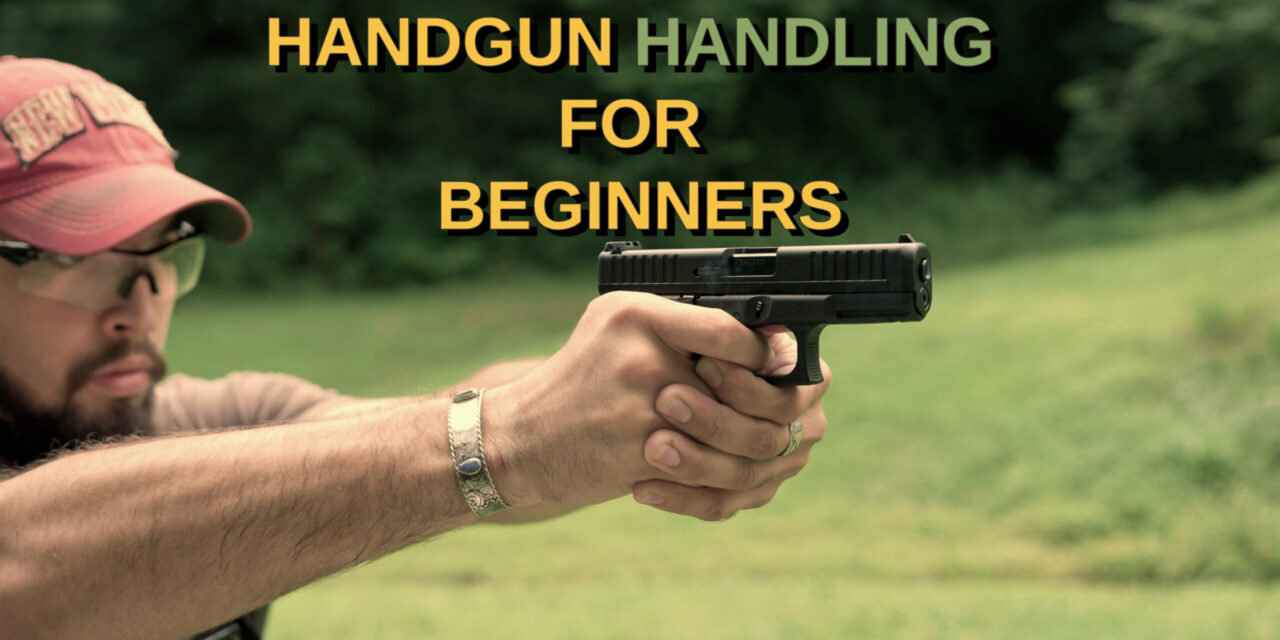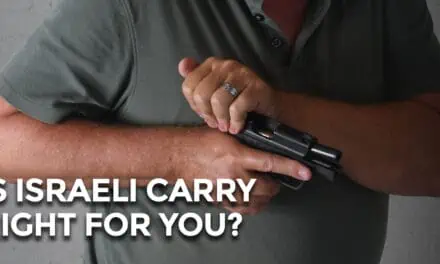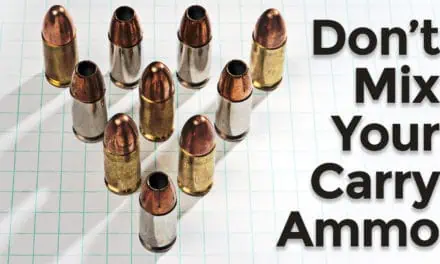The first and most important part of learning how handle a pistol, or any weapon, is understanding the severity of consequences if you don’t treat them with respect. The best way to really grasp this is by going to the range.
But what do you do if you are anxious about going to the range without knowing the first thing about a gun, or how to safely handle it? Much less shoot the thing.
Today, we are focusing on the general handling and safety skills you are going to need prior to actually shooting for the first time. We have plenty of other articles that cover the specifics of how to hold a pistol while shooting, as well as drills to help you shoot better.
This is going to stick to the basics, but I do hope that it serves as a solid foundation for your first trip to the range as a brand new gun owner or first time shooter.
If you would like to see some of the techniques discussed, be sure to click the video below!
How to Hold a Pistol
The fist step in holding a pistol properly, (assuming you have two working hands) is to take your dominant hand (the one that will be pulling the trigger), and grab the pistol high, and deep into the top of the pistol grip. Do NOT leave room between the webbing of your hand, and the swell underneath the slide.
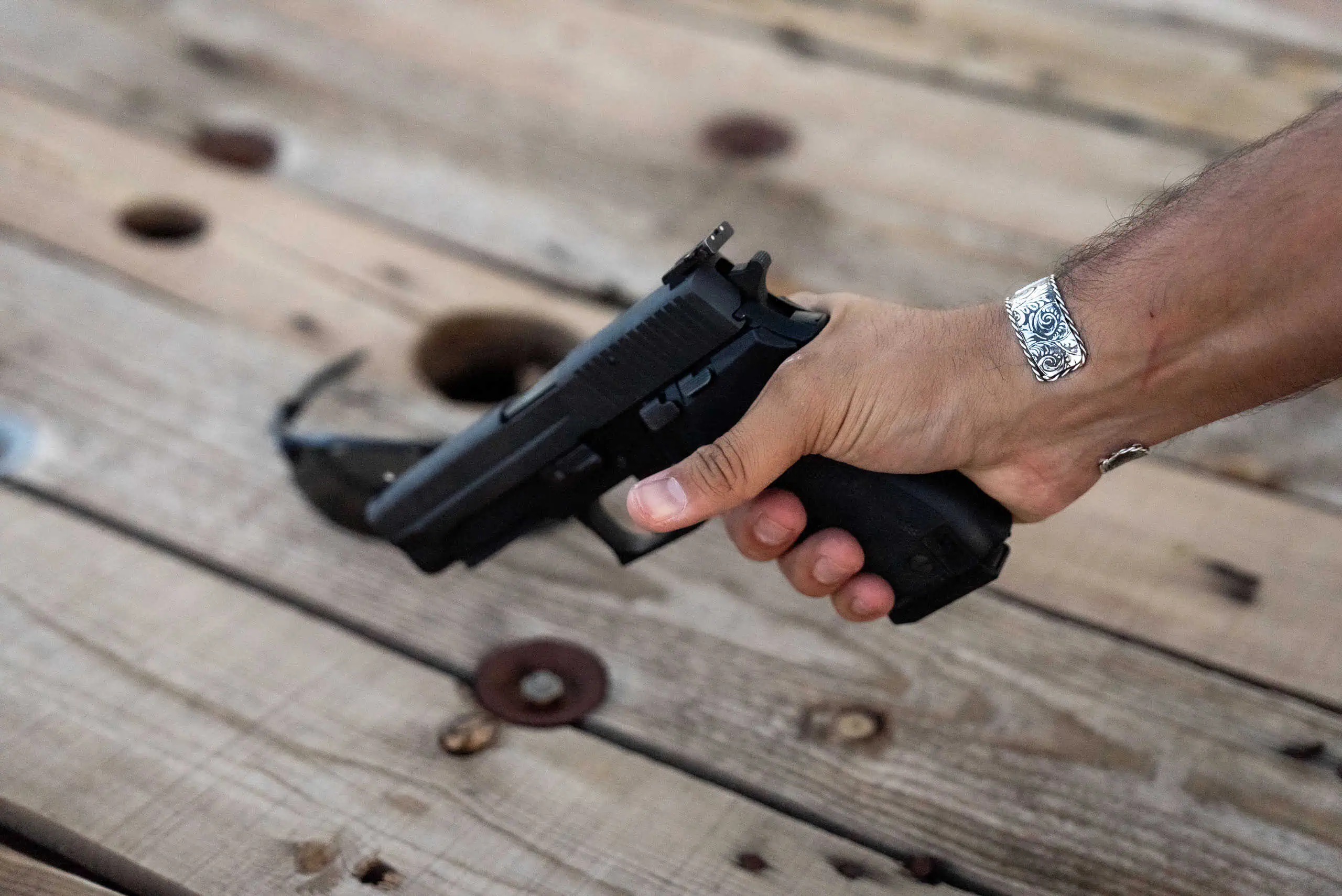
The dominant hand will be high into the tang of the pistol grip.
Next, with your support hand, cover as much of the surface of the pistol grip with your hand and lock your fingers into the grooves of your dominant hand.
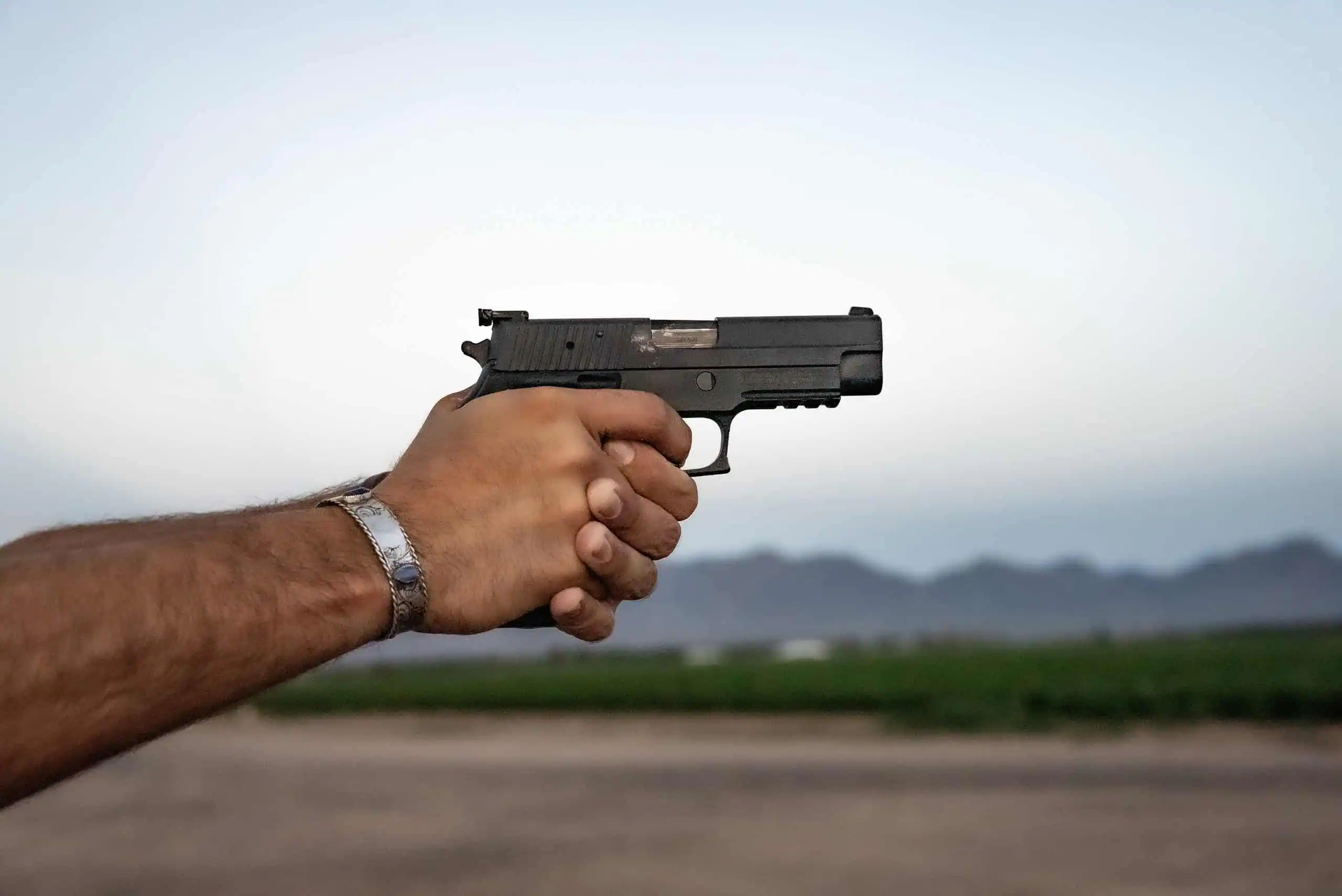
Locking your fingers into the grooves of the dominant hand will greatly aid with your shooting grip.
Using a thumbs forward grip will allow for much more consistent and reliable shooting at speed, with accuracy.
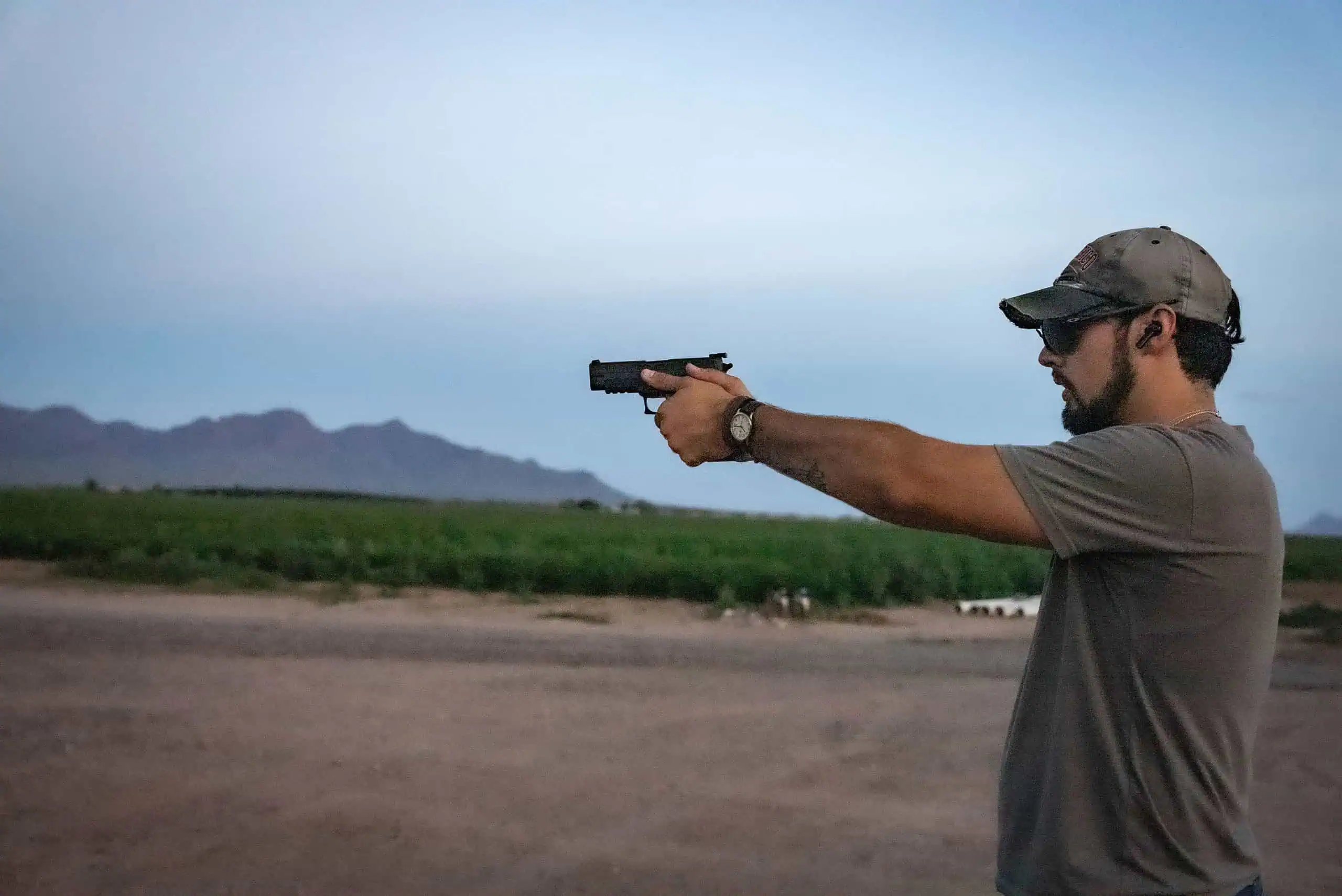
Thumbs forward grip.
Basic Handgun Handling
‘Basic’ gun handling is really just tongue and cheek. There really is no such thing. There is good gun handling and poor handling. I want to discuss a few of the most helpful techniques that I have seen work for most people. Depending on your hand size and strength, there are techniques that are more efficient. I will save those methods for another article, though.
The Four Firearm Safety Rules
Ideally, days before I take someone new to the range, I like to walk them through the four firearm safety rules. This will manage expectations and create a safe, controlled environment where mistakes can be made during the learning process. At the range, it’s imperative that none of the four firearm safety rules are breached.
Starting ahead of time is a great way to alleviate stress and give someone the opportunity to get their hands on a gun and learn some basic fundamentals without the pressure that the range can bring to someone who is unfamiliar in that space. Preparing in advance and focusing on safety, ensures an enjoyable shooting experience for both the new shooter and the instructor.
The four firearm safety rules that resonate with me the most and have had the deepest impact on those that I teach are as follows:
- All guns are always loaded.
- Never let the muzzle cover anything you do not intend to destroy or cannot afford to replace.
- Keep your finger OFF of the trigger until your sights are in acceptable alignment to the target.
- Positively identify your target and maintain awareness of what is surrounding and beyond.
The wording may seem severely particular or unnecessarily wordy. If you have heard another form of firearms safety that makes better sense to you, I applaud and encourage that! You should to use whatever helps you remember and maintain proper safety measures when shooting. I prefer this specific verbiage because it reinforces the fundamentals I learned as a young shooter.
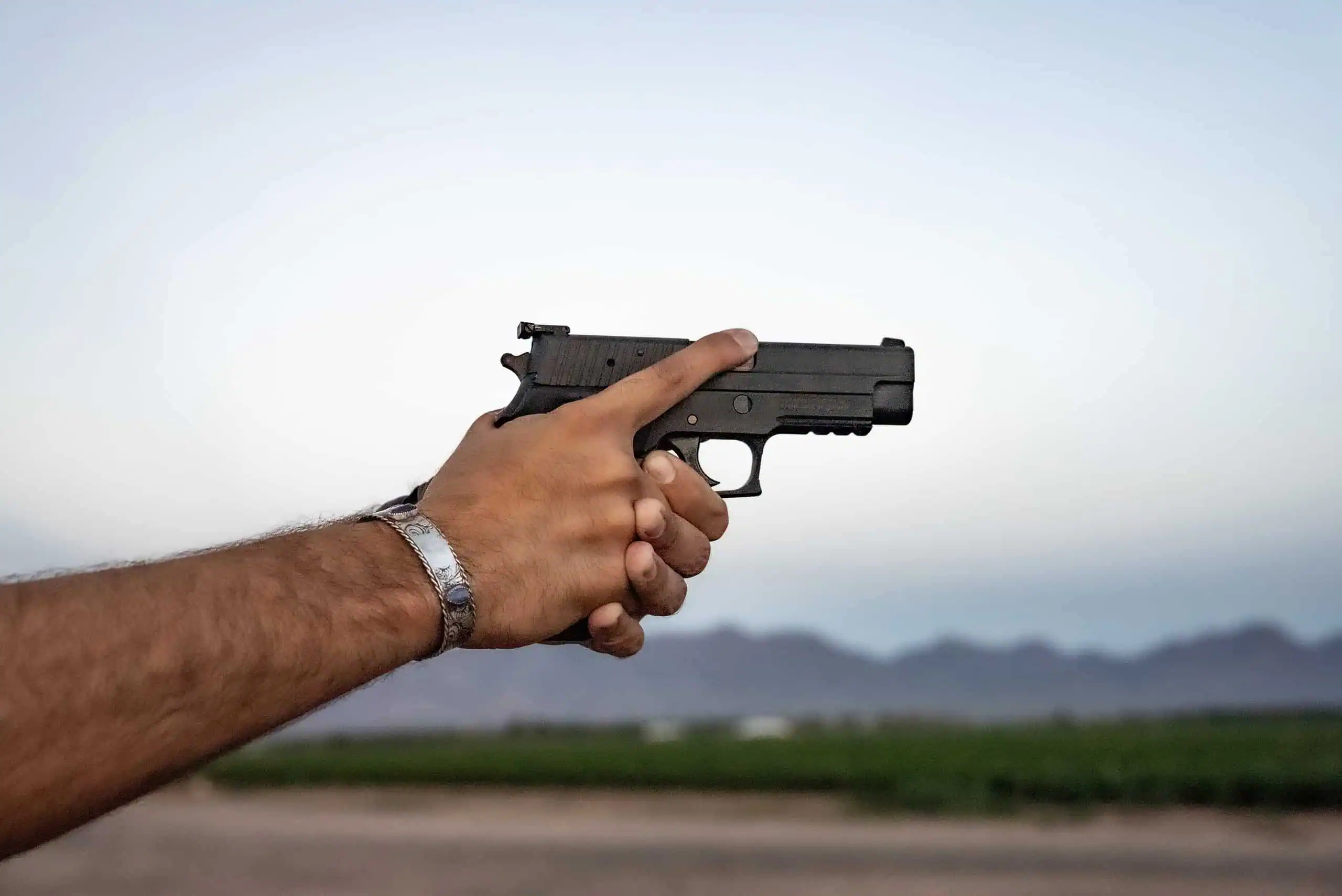
Rule #3 “Keep your finger off of the trigger until your sights are on target.”
Clearing the Gun
The very first thing you should do when picking up a pistol is ensuring that is is safe and cleared. What do I mean by that? A good idea before you begin to explore the world of pistols, is learning how to clear it of ammunition.
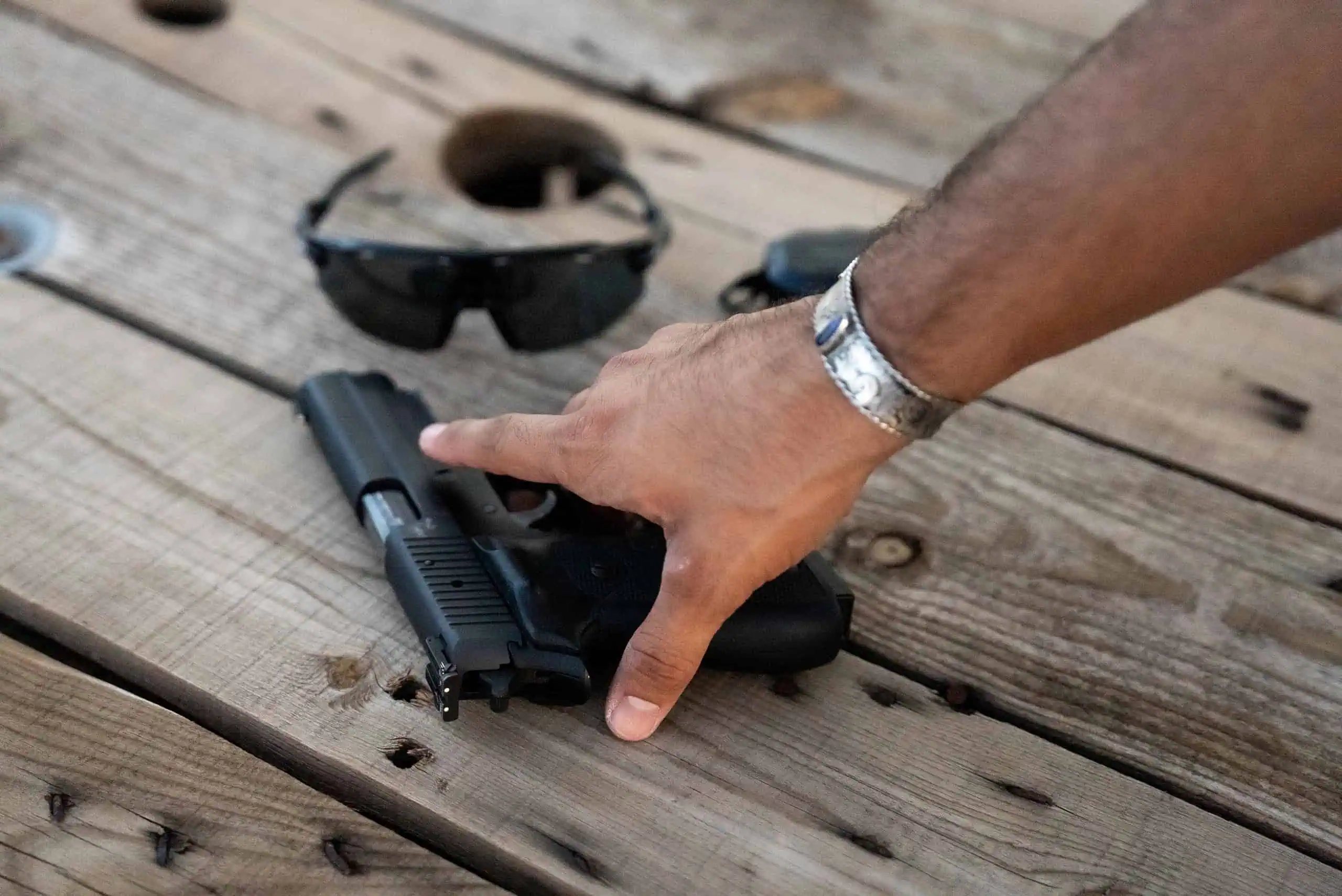
Safety is paramount when interacting with firearms.
Remove Magazine
The first step in the process is to remove the magazine. Generally, on most semi-automatic handguns the magazine release button is on the left side of the grip, just behind and below the trigger. Some models have a heel release, which is as the name implies, on the heel of the pistol grip.
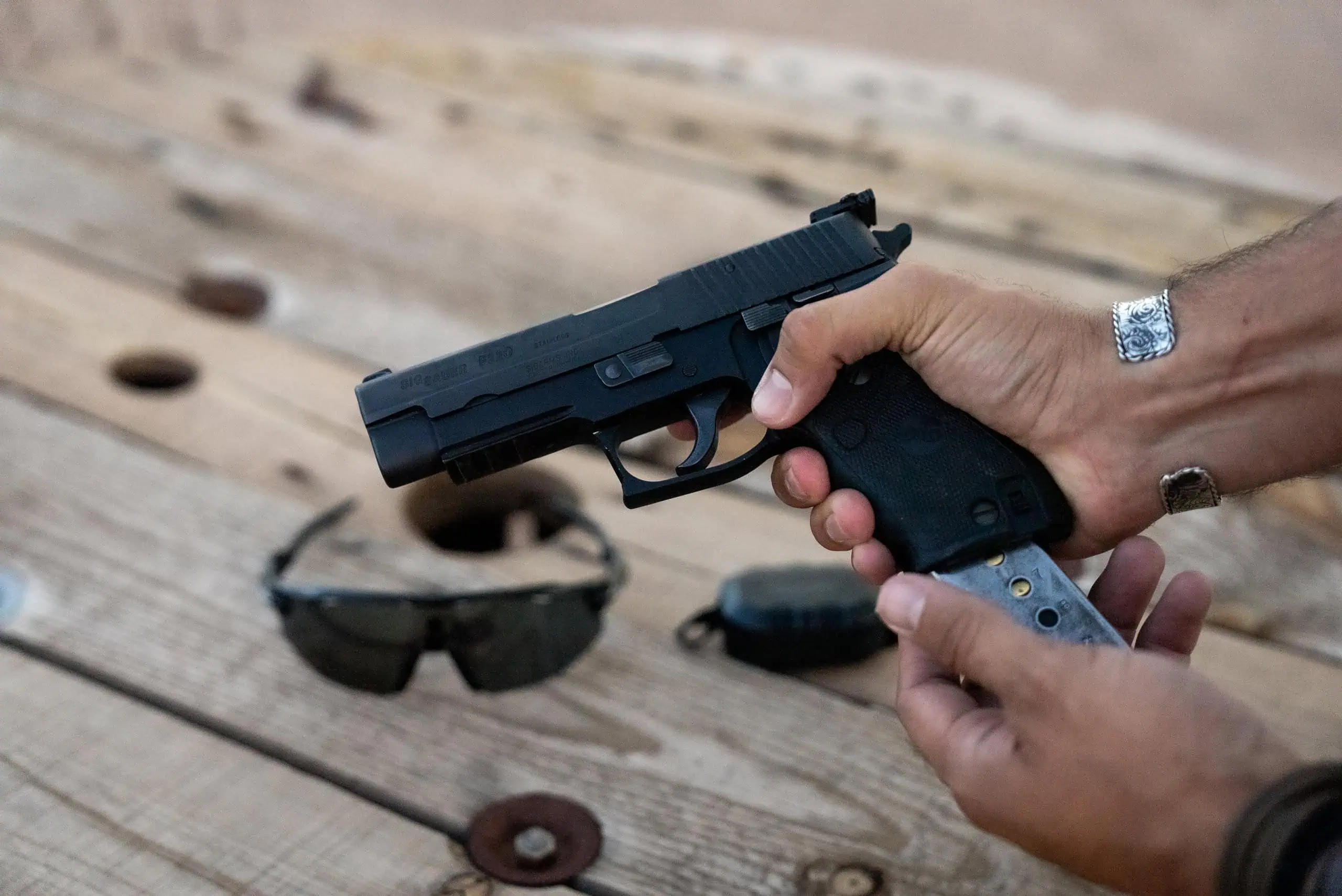
Pressing the magazine release button is the first step in clearing a gun.
Revolvers usually have a cylinder latch which is sort of taking the place of a magazine release. I will discuss revolvers more in the future, but today we will mainly focus on modern, automatic design, pistols.
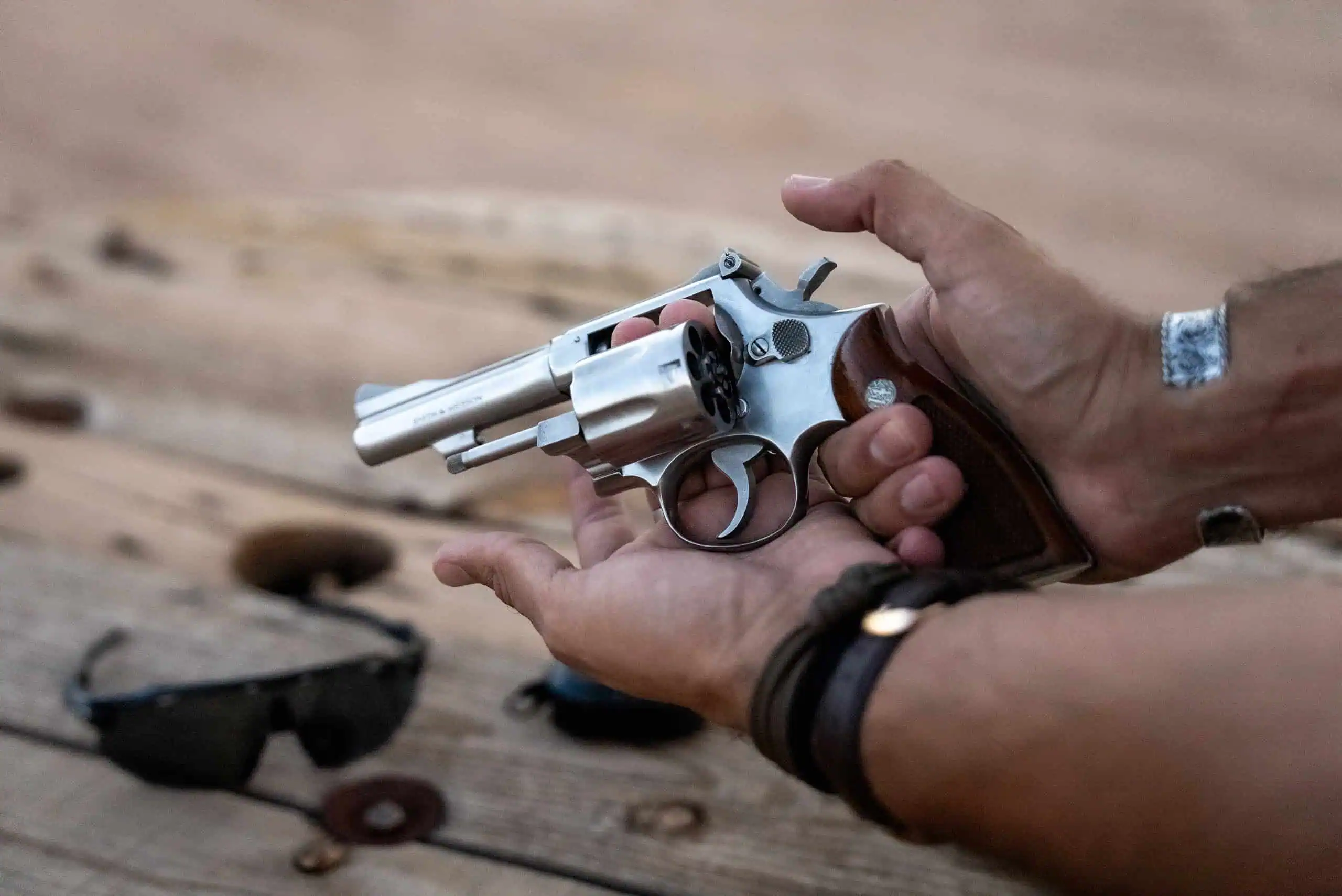
Clearing a revolver.
Lock the Slide and Chamber-Check
After you have removed the magazine, the next step is to lock the slide and clear the chamber of any live rounds and do a chamber-check.
If you have an empty magazine on hand, I would suggest using it for this step. Taking the empty magazine, insert it into the pistol as if to load it. Make SURE the magazine has NO live rounds.
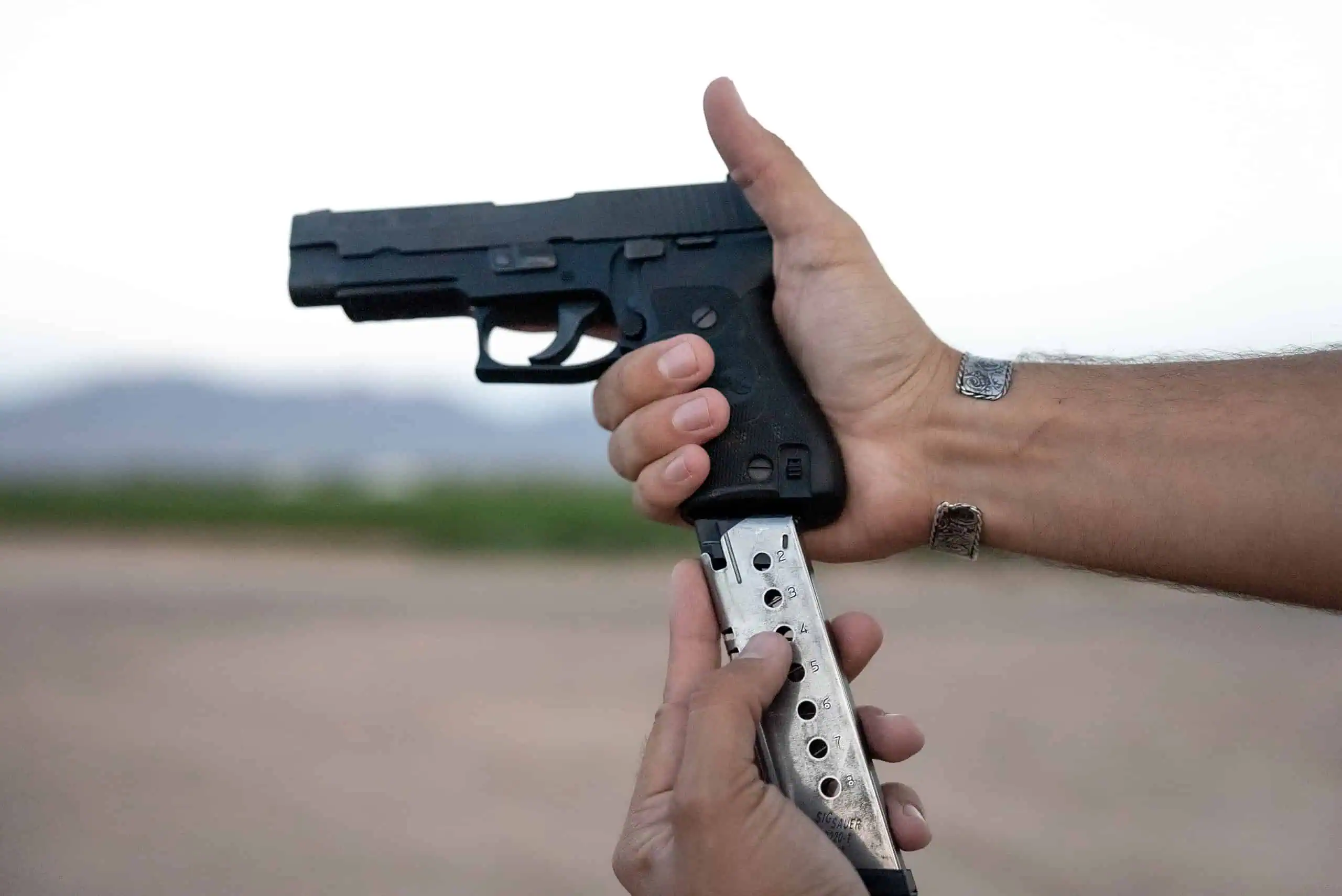
On modern pistols, an empty magazine can be used to aid with locking the slide to the rear.
Next, place your strong hand on the pistol grip and bring the gun close to your chest. With your opposite hand, put the heel of your palm on the side of the slide, and use you finger to get a pinch grip on the slide as best you can.
Holding the slide as firmly as you can, drive the pistol forward with your dominant hand and pull the slide back at the same time using an explosive motion.
With an empty magazine inserted, once the slide is pulled completely to the rear, it will remain unlocked. You will now be able to inspect the chamber for live rounds.
From here, you can safely remove the empty magazine and visually and physically ensure that there is both, no magazine in the gun, nor ammunition in the chamber.
Your pistol is now clear!
Holding a Pistol Without a Holster
When you are new to handling a pistol it can feel very unnatural. If you do not have a holster, get one. If you for some reason cannot access a holster, I would suggest doing all manipulations from a table. This will give you a much easier time loading and unloading your firearm between shooting. Whether or not the handgun you are holding is loaded, make sure to always have it pointed in a safe direction.
The backstop for your shooting is considered safe as long as it can catch each bullet safely. If you cannot unload the handgun and put it on a table facing your backstop then simply place your shooting finger high and away from the trigger and point the pistol directly at the ground. If you want, you can also place two hands on the gun and holding it at waist height, pointing towards the ground.
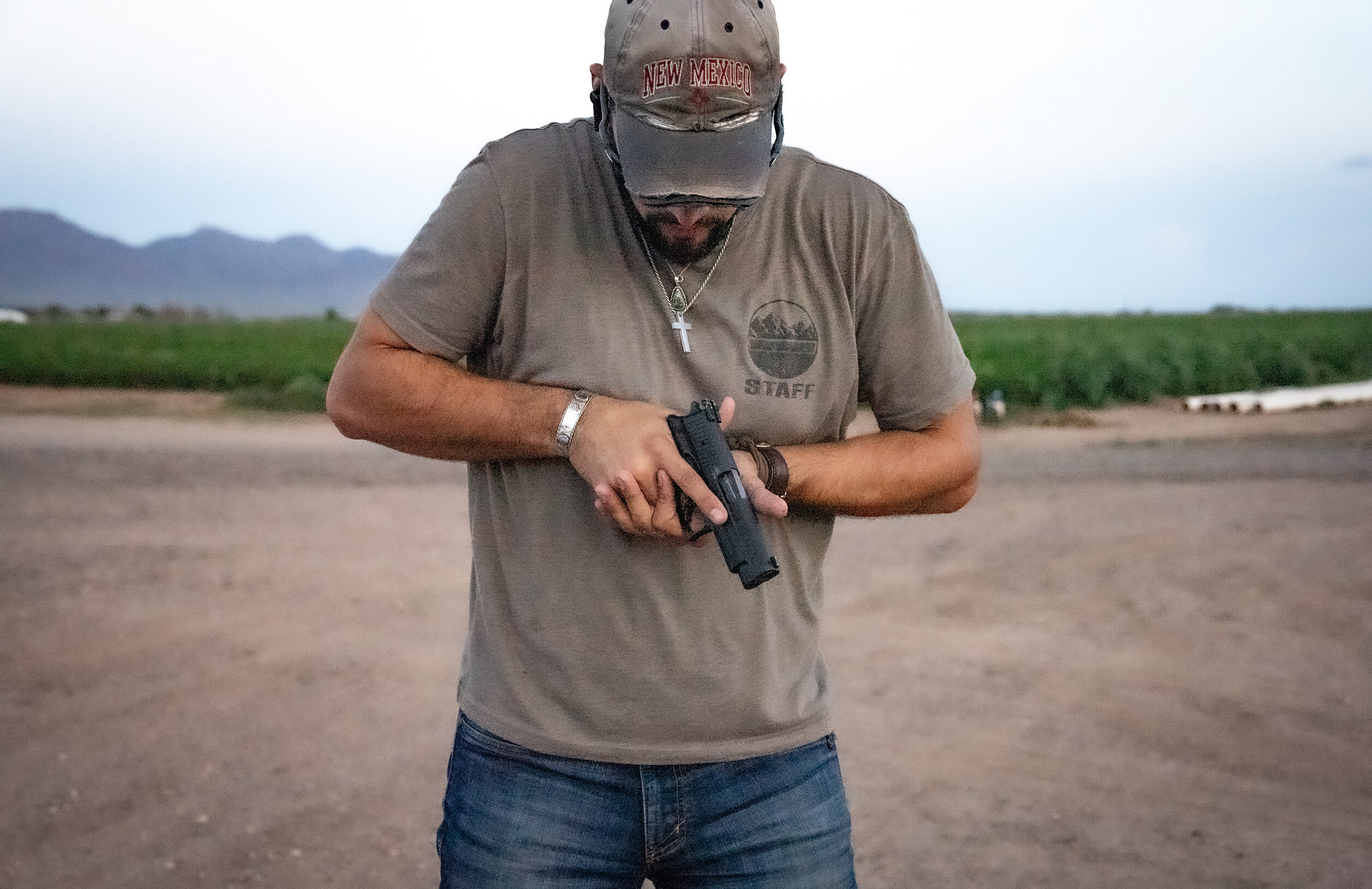
Photo by Claudia Overstreet.
How to Load a Pistol
Loading a pistol is almost identical to the procedure for locking the slide to the rear. With the slide forward, take a loaded magazine and insert it with the rounds facing forward into the pistol. Give the magazine a sturdy tap on the base plate to ensure it is seated all the way. Next, bring the gun up to your chest still facing downrange. With your support hand, repeat the same motion you would to lock the slide to the rear with an empty magazine. Release the slide without slowing the motion down. Releasing the slide slowly will often induce malfunctions.
What to Do If Your Pistol Malfunctions
If you encounter a malfunction, it may be from a multitude of different reasons. For a beginner, the best procedure is to first, be calm. With the pistol facing downrange, remove the magazine if possible, and lock the slide to the rear. Check the chamber for any obstructions. From there you can proceed to load the pistol again and keep shooting if desired.
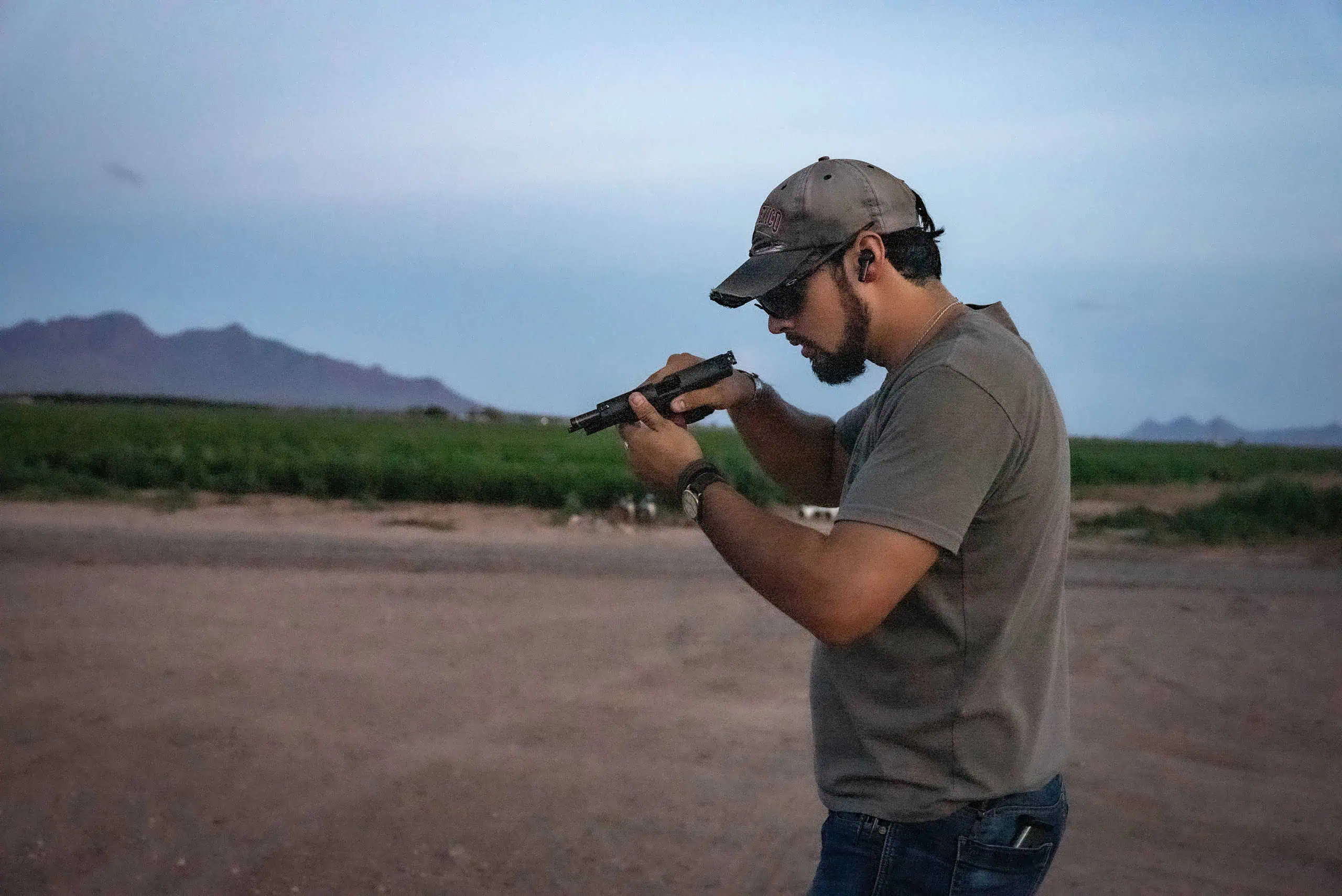
Carefully inspect chamber and barrel for obstructions after significant malfunctions.
If you are shooting and encounter a slide that is simply out of battery due to a double feed, firmly tap the bottom of the magazine, and rack the slide using the same loading technique, but with one extra step. When it comes time to rack the slide back, turn the gun towards your strong side so that any spent casings that may be stuck can fall to the ground.
Proceed to shoot until you wish to stop, or you run out of ammo! If you want a more detailed look at how to work through general malfunctions, go read our Tap, Rack, Bang! article.
Shooting a Red Dot as a Beginner?
One problem for most beginners, is learning to use sights correctly when starting out. It’s difficult! There is new stimuli, a lot of information and other factors that can become overwhelming. This is a major reason I often times recommend teaching new shooters how to use a red dot sighting system instead of iron sights first. A red dot system has many advantages and a few disadvantages. The biggest reason it’s a spectacular tool for beginners is that you only need to tell the shooter, “Put the dot where you want to put a hole.”
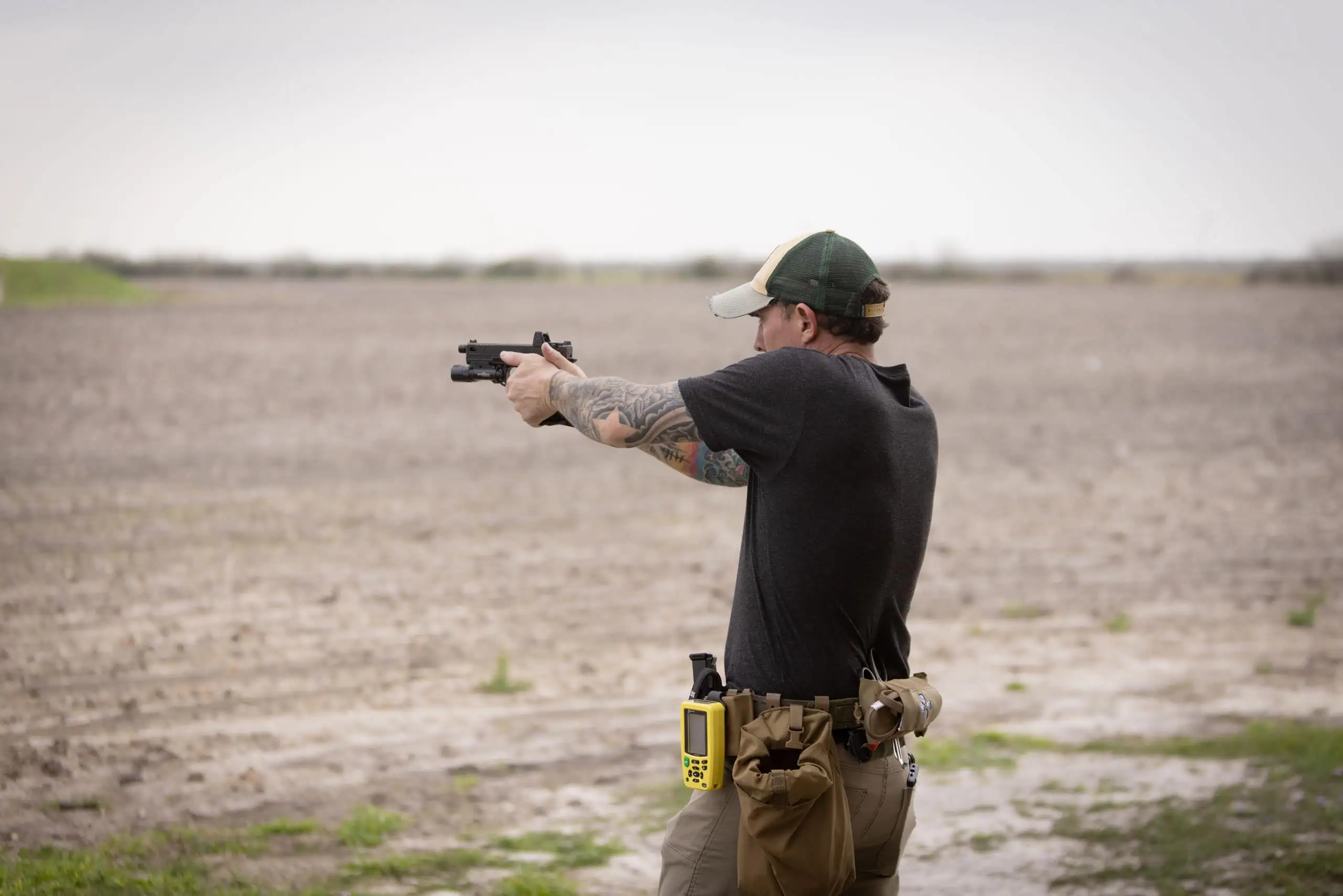
Red dot sights are great tools for teaching beginners.
No matter what sighting system you decide to use, shot calling is a good habit to build and will make you a more confident and capable shooter.
While having fun on the range is an added benefit of the hobby, the reality of the defensive use of a pistol is much more serious. This knowledge and training could one day protect your own life or the life of another.
In the real world, things are not as controlled as they are on a flat range. People and environments do not adhere to the same rules. Situations can be chaotic, scary, and constantly changing. On top of that, your target is often not stationary.
Training for the Real World
It is wise to train the mind to recognize more than what’s directly beyond a target, but to also maintain 360-degree awareness between the target and your muzzle. Developing this comprehensive situational awareness is essential for both safety on the range and in real-world scenarios. If you’re wanting to take a comprehensive course in person that will give you a lot of opportunities to practice this, you need to train with Erick Gelhaus from Cougar Mountain Solutions. Erick puts on some of the best pistol shooting classes money can buy.
The best thing you can do, is train, train, train. When you are able to safely handle your firearm and can hit a reasonably small target consistently at 7 yards, you need to book yourself a ticket to the “Cognitive Conclave” event, that Erick does in partnership with Lee Weems of First Person Safety and John Hearne, owner and instructor of Two Pillars Training.
This event will broaden your mind on real world defensive pistol use, and how you can work your own training to set yourself up for success.
If you’re looking for your first learning pistol, you might enjoy this review of the Glock 44 we did a while back. Otherwise, feel free to check out our YouTube page as well as our social media accounts on Instagram and Facebook. Thank you for your support!

